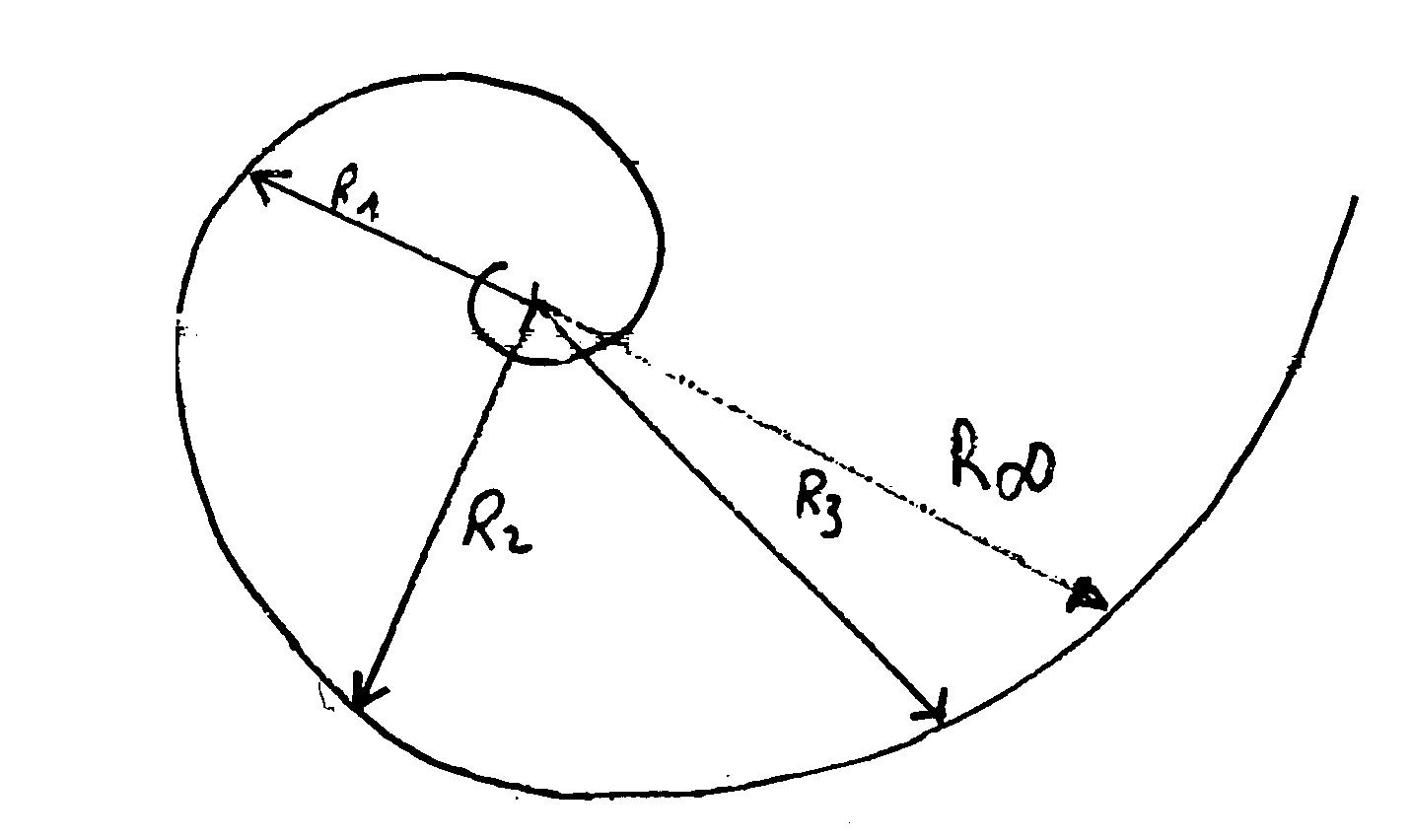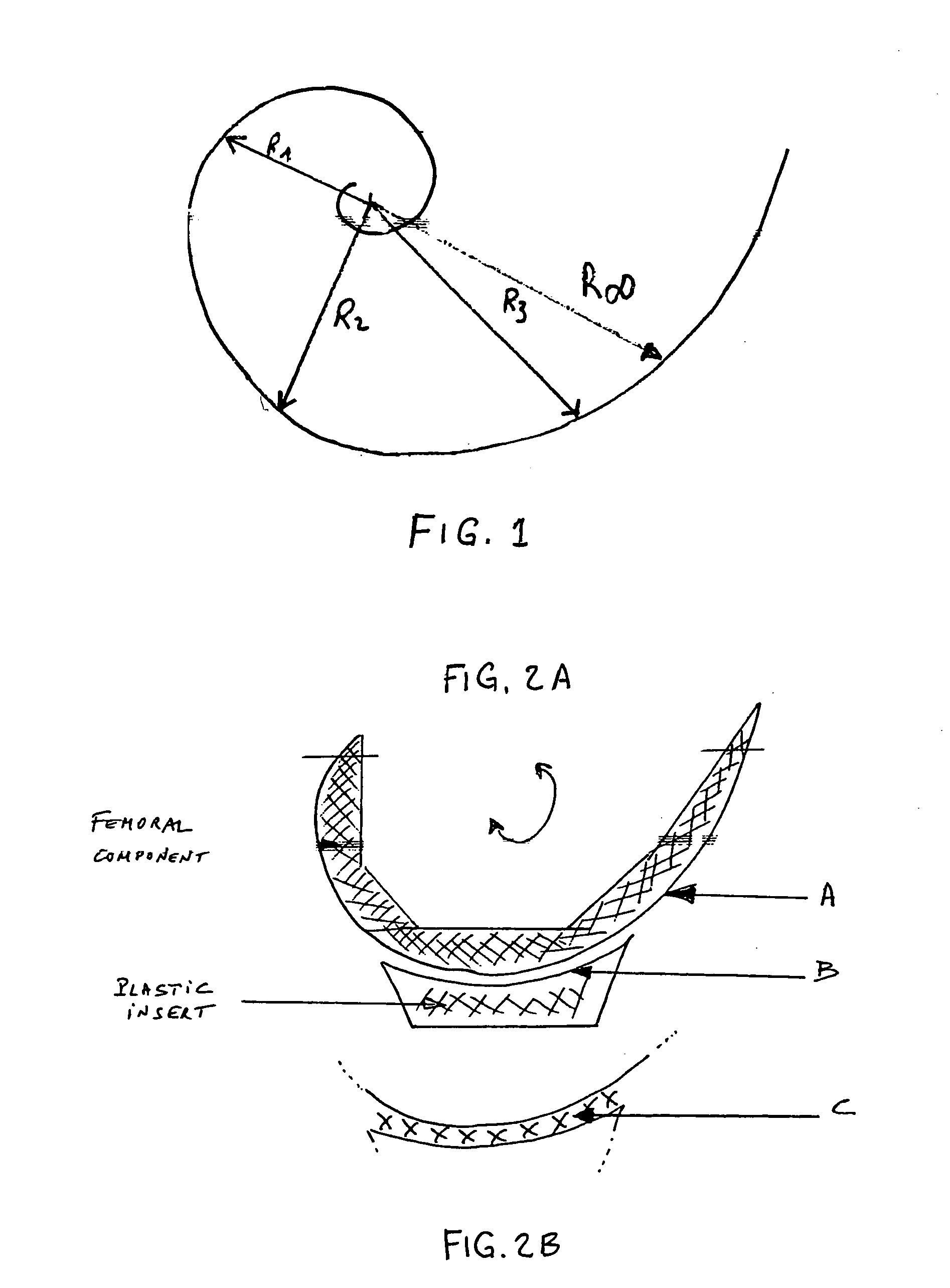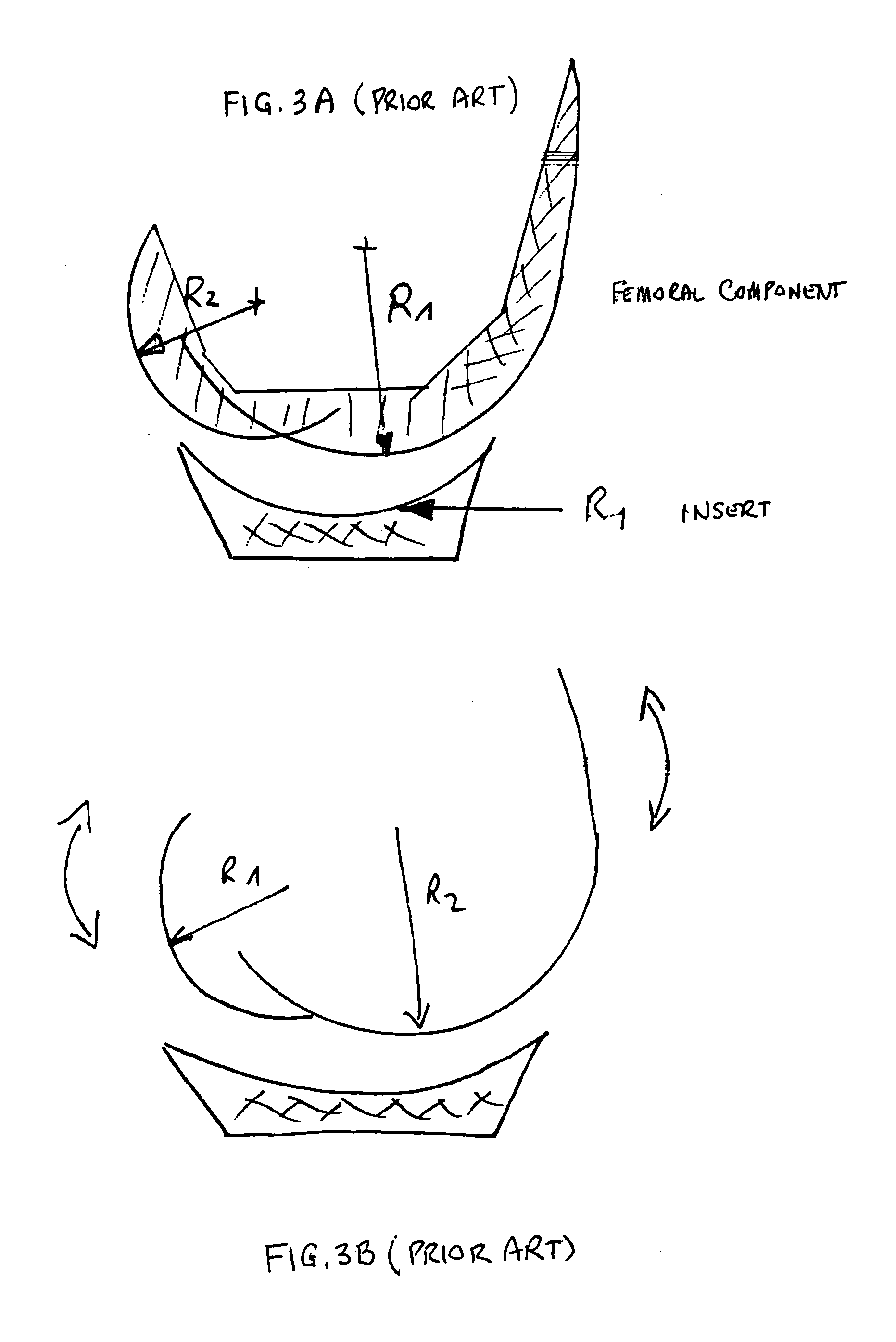Knee prosthesis
a prosthesis and knee technology, applied in the field of knee prosthesis, can solve the problems of total absence of antero-posterior movement freedom between the femoral bones, rapid degradation of polyethylene, and inability to respect the mechanism of rolling/sliding, so as to reduce the
- Summary
- Abstract
- Description
- Claims
- Application Information
AI Technical Summary
Benefits of technology
Problems solved by technology
Method used
Image
Examples
Embodiment Construction
[0093]The knee prosthesis illustrated in FIG. 1 comprises a femoral component 1 which is generally of metal and can be implanted in the femur of the patient, a tibial component 2 which is also of metal and can be implanted in the tibia of the patient, and an insert 3 which is generally of a plastic material such as polyethylene.
[0094]The insert 3 bears on a plateau 4 of the tibial component 2 and can be fixed in position on the latter or, as is shown in the drawing, can be movable in rotation relative to the plateau 4 about an axis which, in the position of use of the prosthesis, is disposed vertically. For this purpose, the insert 3 here comprises, projecting from its surface directd toward the component 2, a stud 5 which is engaged in a hollow central stem 6 of the tibial component 2, in a manner known per se.
[0095]In a conventional manner, the femoral component 1 comprises two lateral condylar parts 7 whose cross section, through a sagittal plane, has the form of a spiral, the ex...
PUM
 Login to View More
Login to View More Abstract
Description
Claims
Application Information
 Login to View More
Login to View More - R&D
- Intellectual Property
- Life Sciences
- Materials
- Tech Scout
- Unparalleled Data Quality
- Higher Quality Content
- 60% Fewer Hallucinations
Browse by: Latest US Patents, China's latest patents, Technical Efficacy Thesaurus, Application Domain, Technology Topic, Popular Technical Reports.
© 2025 PatSnap. All rights reserved.Legal|Privacy policy|Modern Slavery Act Transparency Statement|Sitemap|About US| Contact US: help@patsnap.com



